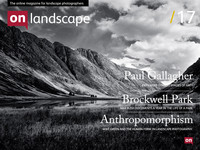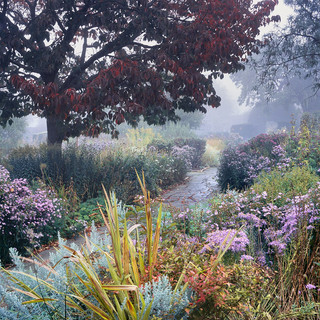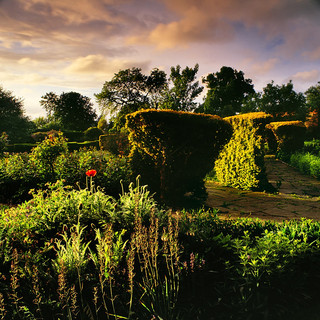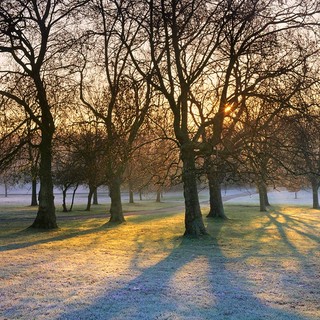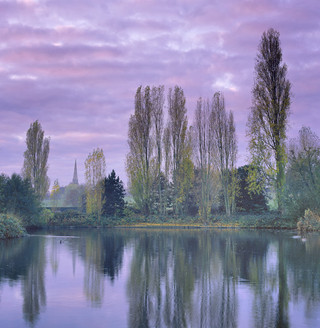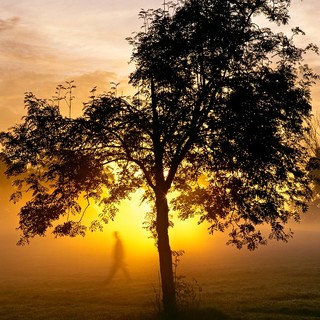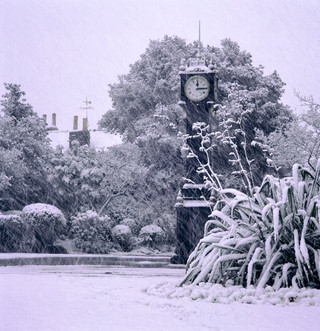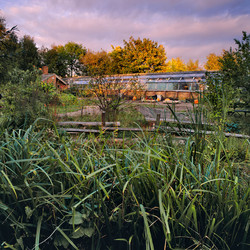Max Rush takes us through a year in Landscape Photographs

Tim Parkin
Amateur Photographer who plays with big cameras and film when in between digital photographs.
I first wandered into Brockwell Park with a camera about five years ago, the park entrance being only a few metres from my front door. Before this it had been nothing more than a pleasant green space to cross on the way to the station at Herne Hill, or the venue for occasional summer picnics. When I could, I traveled to my landscape “home” in mid Wales, photographing the Elan Valley. Although dominated by man-made reservoirs, the Elan Valley is rich in the plant and animal life of wild Britain; every stone there is covered with lichens and painted with watercolour-like mineral stains such that the observant visitor struggles to fully appreciate both the world at their feet and the dramatic scenery of hills, valleys and Victorian dams.
London had nothing of this richness to offer, being built out of tarmac and concrete, cracks in the one revealing deeper layers of the other dating from earlier attempts to cover the entire landscape in one of the two.
However, having borrowed a friend’s digital camera I wandered out on a December morning, for once liberated from the economic constraints of film. A few shop owners had suggested that recognizable local landscapes might sell well as cards and prints, so I attempted to depict some of the park’s old and distinctive oak trees. I was aided by
a spectacular sunrise through fog, and my success in producing decent photographs devoid of visible concrete and bins motivated me to explore this sideline further, portraying other trees and architectural landmarks.
At some point my friend with the digital camera went on holiday, and faced with early spring snow that I couldn’t waste, I went out with my real medium format camera. This marked the beginning of a project I have been pursuing ever since, and the basis for a personal approach to landscape photography in London.
A central idea in my Brockwell Park project is to convey the landscape’s distinctive character, giving prominence to both its historical and modern features. Despite the concrete and bins, this landscape is rich in form and this form a direct link to the area’s well-documented history. It was once a wealthy glass merchant’s country estate, but the original mansion is now the park café, and the kitchen garden split into a decorative walled garden and a community-run greenhouse project. Some of the architecture clearly shows its venerable age, but is also potentially juxtaposed with the still-evolving skyline of central London.
In my first year working on the park, I focused on small details, hoping that if I looked closely enough I would find miniature landscapes as complete as those in Wales. In a few cases this worked: the meadow in late summer, flattened into swirling patterns by the preceding months’ wind and rain, or the knotted branches of closely growing plane trees in falling snow, a graphic texture of grey and white lines. However with increasing confidence grew the desire to tackle the wider landscape and to make the accessible appeal of the dramatic, even epic vista work in my favour. The feeling that this was a more difficult challenge further increased my resolve, and towards the end of the project many of the earlier miniature landscapes in my portfolio had been usurped by more accomplished, carefully considered and planned wide-angle views made in dramatic light and with whatever other exciting weather phenomena I could work with. The luxury of living within seconds of my location enabled me to capture fleeting meteorological drama and beauty that has eluded me elsewhere, and in glancing though the work I hope one of its overall characteristics is an abundance of vibrant colours. I have tried to use the weather as an atmospheric connoisseur, prizing the best examples of fog, frost, snow and summer showers in the same very familiar settings. For once I can show a location on some of the very best days of the year, and not have to make do with what’s available during a short window. Over the years I’ve found the
climate in London to produce a lot of photogenic weather, but of a slightly different kind from that typical of mid Wales or Scotland. I particularly enjoy using dramatic cumulus cloud-filled skies to convey a feeling of grandeur, like the Dutch, German and Italian landscape painters whose work I often study. Contrails aside, the London sky is the great expanse of wilderness that we have permanent access to, an ever-changing spectacle of natural forces that contrast with or compliment the immobility of the land. Occasionally it even descends to envelop the ground in fog, falling snow or drifting rain, forming the link between landscape and cloudscape that is so often felt in the countryside. One of the qualities I have particularly sought in this project is the sense of almost consciously designed drama that recalls the work of painters – it reinforces the images of nature as we’ve seen it depicted (with apparent artistic license), but also demonstrates that many of these observations are quite truthful, and as true in the urban environment as in the rural.
I hope my journey through the seasons and the park landscape can help change preconceptions of what London can look like, and also the idea that travel is a prerequisite for landscape photography. Of course not all Londoners live quite as close to green spaces as I do, but few of us are so
far removed from nature that we can’t at least practice the craft in familiar surroundings.
I am now widening the scope of my work, spending more time exploring other parts of south London and also having been commissioned to photograph Islington’s parks through the seasons. Some of my new elevated locations in Lambeth and Southwark literally put Brockwell Park in context, with the park’s central hill rising out of the conurbation’s vast expanse of trees and buildings. However this year I had the opportunity to exhibit the original photographs of the park in the park itself, as one of three shows in Brockwell Hall, the estate’s mansion.
With the support of the park management, “friends of” group and two commercial sponsors, Veolia and Land Use Consultants, I was able to print and display almost forty of the photographs, for once having the resources to present them in the sizes and frames I think best suit them.
The show was a huge success, with over 600 visitors during the short 3-day run. Many of the prints sold to enthusiastic locals and in the subsequent weeks I have barely had time to deal with all the orders. I’ve also found a new larger local venue, available for a whole month, and I hope some of those that didn’t make it to the first show will be
able to see the second.
I frequently think of the long hours I spent alone in the park, slowly working out what to do with the work and how to make the most of London’s particular qualities not just as a location but as a marketplace for art. Seeing so many people go out of their way to help with my show and to buy prints reminds me how powerful and accessible the art of landscape photography is. It can be a difficult profession, but it’s easy to forget how much can be gained by making decent prints and finding ways of showing them to people. It brings the pictures out of the confused world of the internet and the forgotten world of disks and transparency sleeves and gives them a substance comparable to that of paintings.
For those readers planning on being in London in September, the new incarnation of Brockwell Park, a Year in Landscape Photographs will be at Carnegie Library, Lambeth. It’s open on Mondays, Wednesdays, Fridays and Saturdays, with full details available on my website soon – www.maxarush.com
Technical details (in case of interest):
All the park photographs were made using a Bronica SQ 6x6 cm camera and three lenses, 50, 80 and 150mm. The film was Velvia and very little filtration was used, apart from ND grads. Some of the architectural subjects were challenging to photograph without a view camera, but with the particular emphasis on the weather and light, the speed and convenience of roll film made this choice worthwhile. Many exposures were spoiled by dog and dog-walker movement, so the ability to make a few at a time without excessive expense was also valuable.
The prints were made from scans, colour-corrected and prepared myself and printed on Hahnemule Photo Rag paper at Photofusion, my local photographic centre in Brixton.
Brockwell Park:
A Year in Landscape Photographs by Max A Rush
At Carnegie Library
188 Herne Hill Road
SE24 0AG
Throughout September 2011
- Autumn in the walled garden
- Evening shower in the walled garden
- January dawn with leaning planes
- Morning walker in drifting fog bank
- Pendulous sage and pond
- Sunrise in fog, near Brockwell Hall
- Brockwell Hall in winter
- Bare branches and morning mist
- Brockwell clock in snowstorm
- Delicate dawn at the lake

